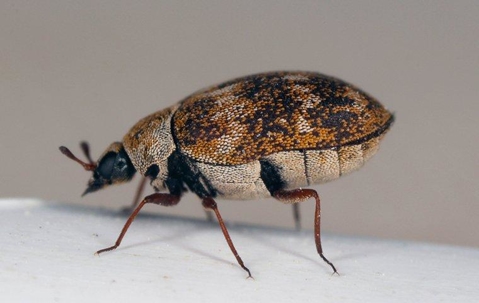The more ruinous a pest is, the more they are talked about. If a pest is known for doing significant and costly harm to buildings or possessions, they will be at the forefront of pest discussions. The same could be said for those that bring about illness, either through transmission or contamination. These are important threats that will lead to Salt Lake City homeowners sharing deterrence tips and experiences.
For pests with milder reputations, such as carpet beetles, not much is known about them. Few people really understand how they come to be or get indoors. The damage they cause certainly isn’t anticipated. Ways to prevent or get rid of them aren't widespread knowledge either. Get critical information now, and learn how Pest Pro Pest Control can intervene.
How Do Carpet Beetles & Larvae Function? What Are the Risks?
There are several subspecies of carpet beetles. On average, the winged bugs are 1/16 to 1/8 of an inch long. The type that is all black with a reddish-brown tint is covered in short hairs, and has three sets of legs and two antennas. Black furniture beetles look similar, but have yellow and white mottling to help distinguish them. “Varied” carpet beetles have the largest populations. They too are black, but they have beige, white, and/or yellow markings. Each is drawn to light, so check your lamps and window sills for carpet beetles.
The brown or black larvae of carpet beetles are the most concerning, as they consume and ruin various materials. Elongated and rounded, their bodies are wrapped in barbed brown hairs. These young specimens tend to consume the following:
- Bedding
- Upholstery
- Rugs
- Clothes
- Leather
- Felt
- Wool
- Silk
- Stored goods
- Hair
- Dead insects and animal byproducts
- Pollen, seeds, and plants
It’s unwise to touch carpet beetles or larvae directly because it can lead to rashes and skin irritation, in patchy outbreaks similar to those of bed bug bites. The appearance of larvae or their shed skin casings are the strongest signs of infestation. Adult carpet beetles usually roam into homes through gaping windows or doors. Moreover, many people bring in items saturated with the bugs unknowingly. Carpet beetles typically lay eggs in furniture, rugs, and fabrics. Their nesting sites include closets, storage areas, and cupboards. If you don’t run a tight ship with cleaning, you could be the victim of multiple breeding cycles.
How Can You Prevent Carpet Beetles & Larvae?
It’s not hard for carpet beetles to produce larvae and survive unnoticed. They are all very tiny and difficult to see. They hide deep in threads; natural fiber-based matter drives them wild. As they munch away on things, small holes will appear. Not knowing that these are indications of carpet beetles, homeowners often dismiss what they see, so preventive action is imperative:
- All rugs and carpets, fabrics, and upholstery must be vacuumed and cleaned regularly.
- Take a good look at secondhand clothes and furniture before purchasing it.
- Find cracks or tears around doors, windows, and screens and fix them.
- Check to see if your door sweeps are in good shape.
- Put your fabrics in compressed bags or plastic containers for storage.
- Call Pest Pro Pest Control if you have issues with carpet beetles.
How Does Pest Pro Pest Control Eliminate Carpet Beetles?
We at Pest Pro Pest Control have custom solutions for carpet beetles. Our three-series treatment exterminates live bugs and the larvae as they hatch. The maintenance plan option is ideal for infestations, and consists of repeat insecticide applications. Our professional technicians will address baseboards, closets, furnishings, and appliances, and our services are guaranteed. Call us today for a free inspection!

